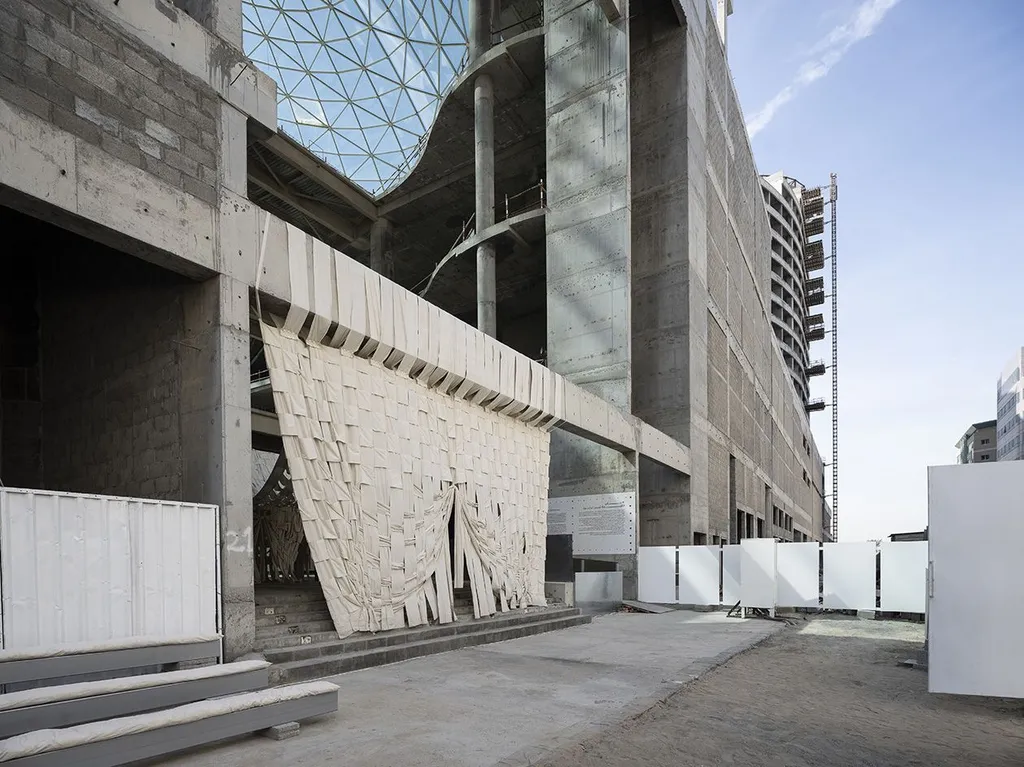In the quest to bolster the structural integrity of aging infrastructure, a groundbreaking study has emerged from the American University of Sharjah, offering promising insights into the future of reinforced concrete (RC) beam strengthening. Led by Abubakr Mohammed, a civil engineering expert, the research delves into the flexural behavior of RC T-beams enhanced with hybrid systems combining Aluminum Alloy (AA) plates and Carbon Fiber Reinforced Polymer (CFRP) laminates.
The study, published in the open-access journal ‘Composites Part C: Open Access’ (translated from Composites Part C: Open Access), involved a rigorous experimental and analytical investigation of sixteen RC T-beams. Among these, fourteen were strengthened using various configurations of AA plates, CFRP laminates, and their hybrids, while two control specimens served as baselines. The beams were subjected to four-point bending tests to evaluate their performance under stress.
The results were striking. All specimens exhibited flexural failure modes, with laminate debonding identified as the primary failure mechanism. The strengthened beams demonstrated significant improvements in load-carrying capacity, with enhancements ranging from 18% to 77% for low reinforcement ratio specimens and 10% to 44% for high reinforcement ratio specimens. “The findings suggest that an optimized hybrid system configuration can substantially increase beam strength while maintaining satisfactory ductility characteristics,” Mohammed explained.
One of the most compelling aspects of the study was the observation that specimens with higher reinforcement ratios exhibited less pronounced ductility reduction. This finding could have profound implications for the energy sector, where the structural integrity of facilities is paramount. As infrastructure ages, the need for effective strengthening solutions becomes increasingly critical. The hybrid AA/CFRP systems offer a promising avenue for enhancing the load-bearing capacity of existing structures, potentially extending their service life and reducing the need for costly replacements.
The study also highlighted the need for refined design methodologies. Analytical predictions of load-carrying capacity were developed and compared with experimental results, revealing that the ACI-440.02R-19 provisions provided unconservative estimates for beams strengthened with AA plates. This discrepancy underscores the importance of ongoing research and development in this field.
As the energy sector continues to evolve, the demand for innovative solutions to strengthen and maintain infrastructure will only grow. The research conducted by Mohammed and his team at the American University of Sharjah represents a significant step forward in this endeavor. By optimizing hybrid strengthening systems, engineers can enhance the structural performance of RC beams, ensuring the safety and longevity of critical infrastructure.
The implications of this research extend beyond the immediate findings. As the energy sector seeks to modernize and upgrade its facilities, the insights gained from this study could shape future developments in structural engineering. The hybrid AA/CFRP systems offer a versatile and effective solution for strengthening RC beams, paving the way for more resilient and sustainable infrastructure.
In conclusion, the study by Mohammed et al. published in ‘Composites Part C: Open Access’ provides valuable insights into the flexural behavior of RC T-beams strengthened with hybrid AA/CFRP systems. The findings highlight the potential of these hybrid systems to enhance the load-carrying capacity and ductility of RC beams, offering a promising solution for the strengthening and maintenance of aging infrastructure. As the energy sector continues to evolve, the insights gained from this research could shape future developments in structural engineering, ensuring the safety and longevity of critical infrastructure.

